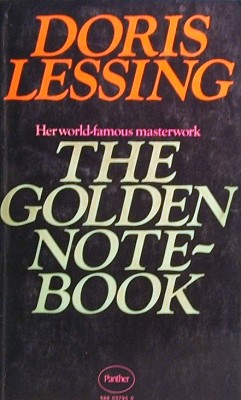Doris Lessing: The Golden Notebook

August 2015
From the preface, Lessing writes:
The shape of this novel is as follows:
There is a skeleton, or frame, called Free Women, which is a conventional short novel, about 60,000 words long, and which could stand by itself. But it is divided into five sections and separated by stages of the four Notebooks, Black, Red, Yellow and Blue. The Notebooks are kept by Anna Wulf, a central character of Free Women. She keeps four, and not one because, as she recognises, she has to separate things off from each other, out of fear of chaos, of formlessness – of breakdown. Pressures, inner and outer, end the Notebooks; a heavy black line is drawn across the page of one after another. But now that they are finished, from there fragments can come something new, The Golden Notebook.
The pressures on Anna Wulf – as an author of an artless yet immensely popular novel, as a crusader in a fruitless political cause, as a “free woman”, a single mother, a landlady, a lovelorn woman, and struggling with the her guilt over the failed suicide attempt of her friend’s son – despite her outwardly privileged life, pushes her to the edge of a mental breakdown.
To conclude the preface, Lessing tells us type of letters she receives concerning the book: there are from those who see it as a book about womens liberation, others as about the communist movement and others still as about mental illness. And, truly, this book encompasses all these themes and more.
Definitely the most impressive and powerful work by Lessing that I’ve read and although a long book, well worth reading.